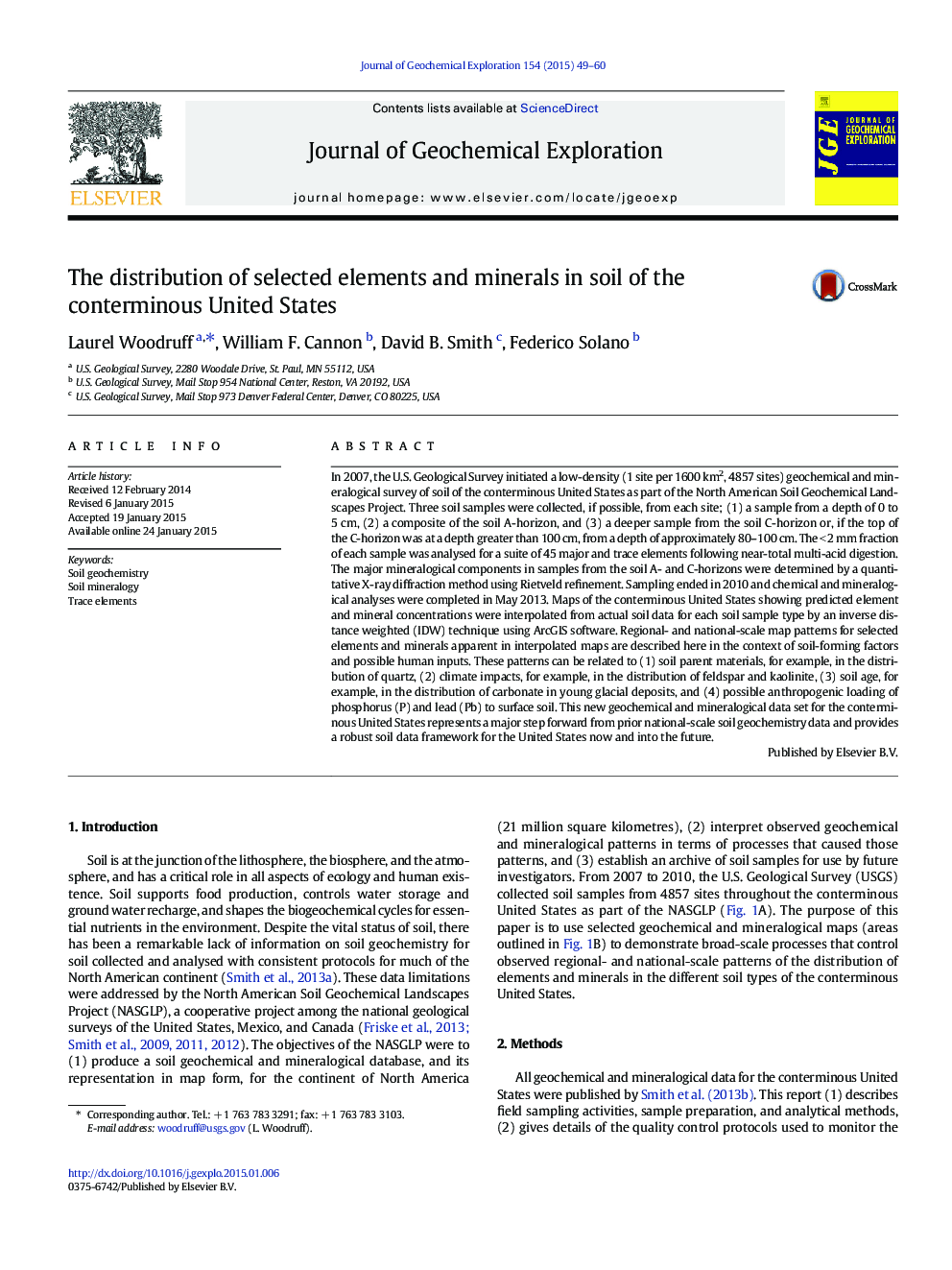| Article ID | Journal | Published Year | Pages | File Type |
|---|---|---|---|---|
| 4457103 | Journal of Geochemical Exploration | 2015 | 12 Pages |
•Soil geochemistry and mineralogy are attributed soil-forming factors.•Soil mineralogy has a profound control on soil chemical and physical properties.•Quantitative mineralogy identifies mineral hosts for major and trace elements.•Some trace elements indicate human influences on soil background concentrations.
In 2007, the U.S. Geological Survey initiated a low-density (1 site per 1600 km2, 4857 sites) geochemical and mineralogical survey of soil of the conterminous United States as part of the North American Soil Geochemical Landscapes Project. Three soil samples were collected, if possible, from each site; (1) a sample from a depth of 0 to 5 cm, (2) a composite of the soil A-horizon, and (3) a deeper sample from the soil C-horizon or, if the top of the C-horizon was at a depth greater than 100 cm, from a depth of approximately 80–100 cm. The < 2 mm fraction of each sample was analysed for a suite of 45 major and trace elements following near-total multi-acid digestion. The major mineralogical components in samples from the soil A- and C-horizons were determined by a quantitative X-ray diffraction method using Rietveld refinement. Sampling ended in 2010 and chemical and mineralogical analyses were completed in May 2013. Maps of the conterminous United States showing predicted element and mineral concentrations were interpolated from actual soil data for each soil sample type by an inverse distance weighted (IDW) technique using ArcGIS software. Regional- and national-scale map patterns for selected elements and minerals apparent in interpolated maps are described here in the context of soil-forming factors and possible human inputs. These patterns can be related to (1) soil parent materials, for example, in the distribution of quartz, (2) climate impacts, for example, in the distribution of feldspar and kaolinite, (3) soil age, for example, in the distribution of carbonate in young glacial deposits, and (4) possible anthropogenic loading of phosphorus (P) and lead (Pb) to surface soil. This new geochemical and mineralogical data set for the conterminous United States represents a major step forward from prior national-scale soil geochemistry data and provides a robust soil data framework for the United States now and into the future.
